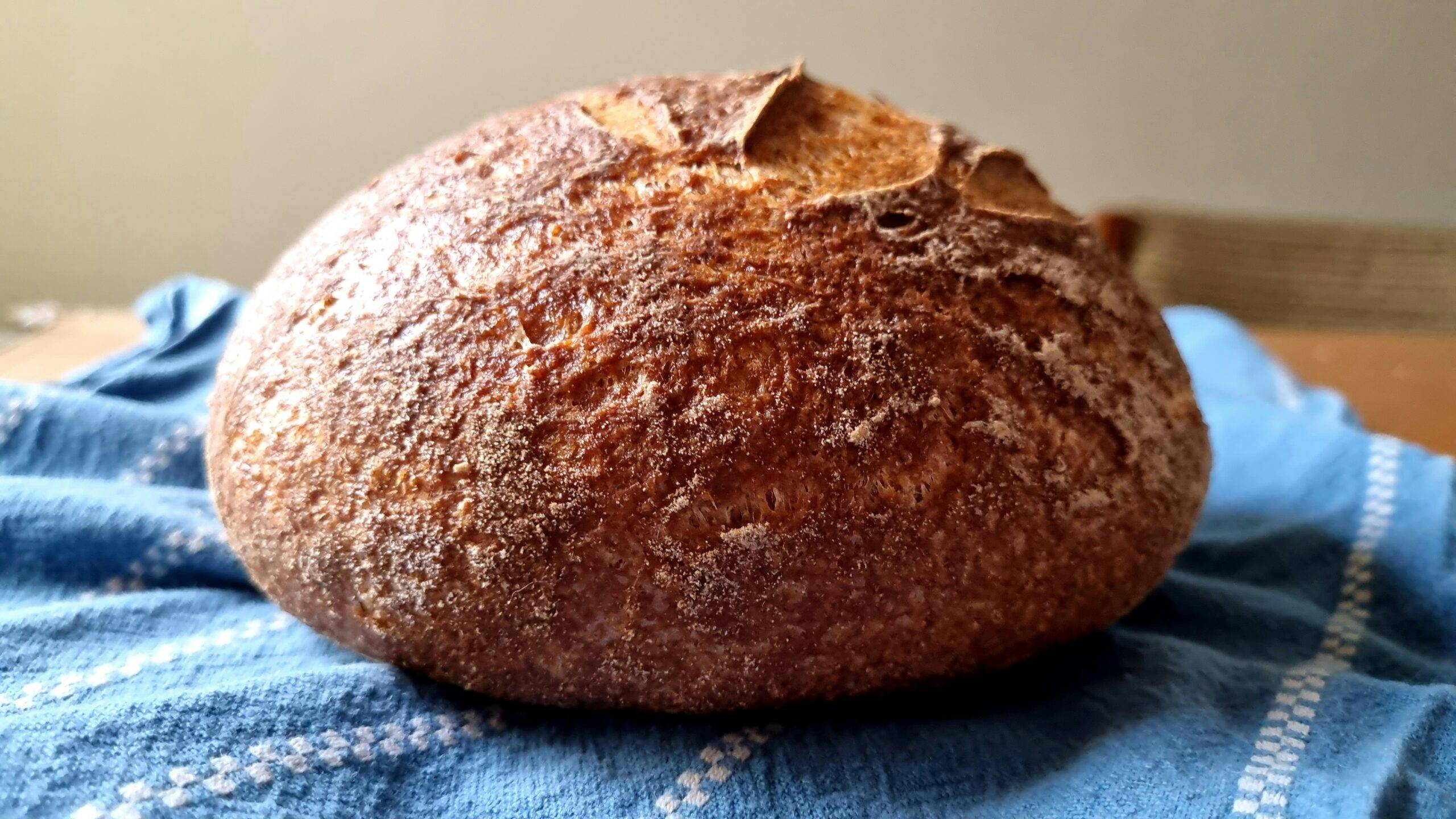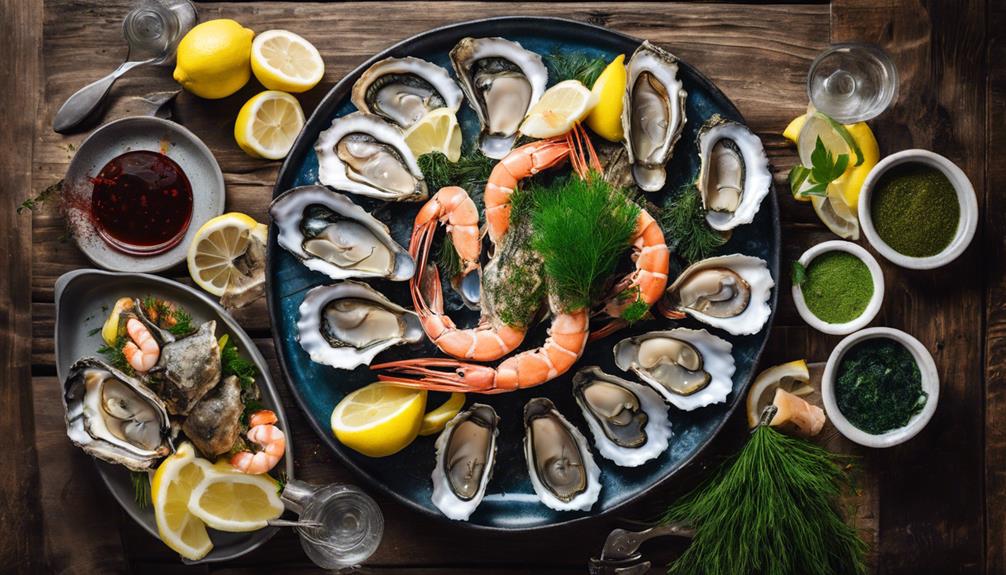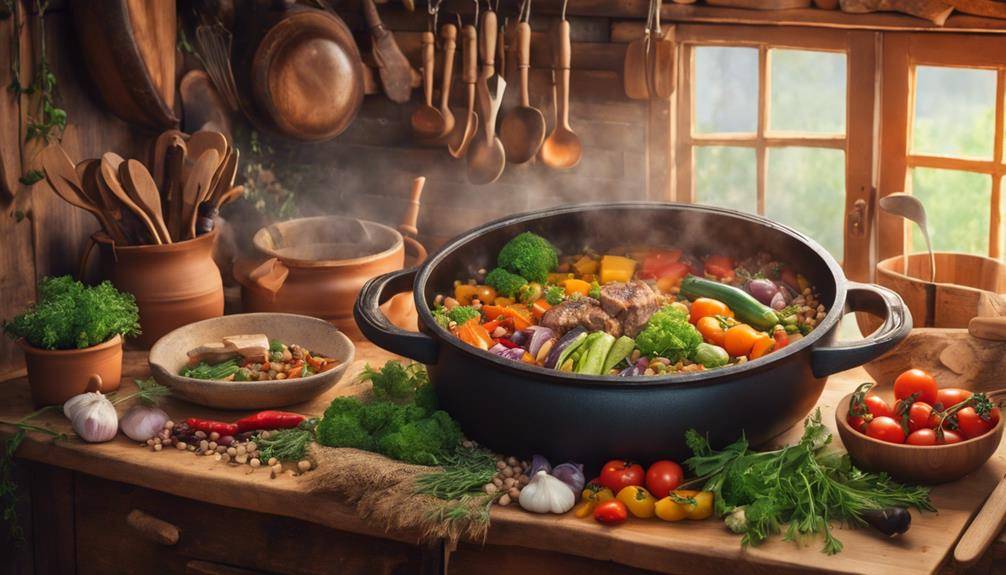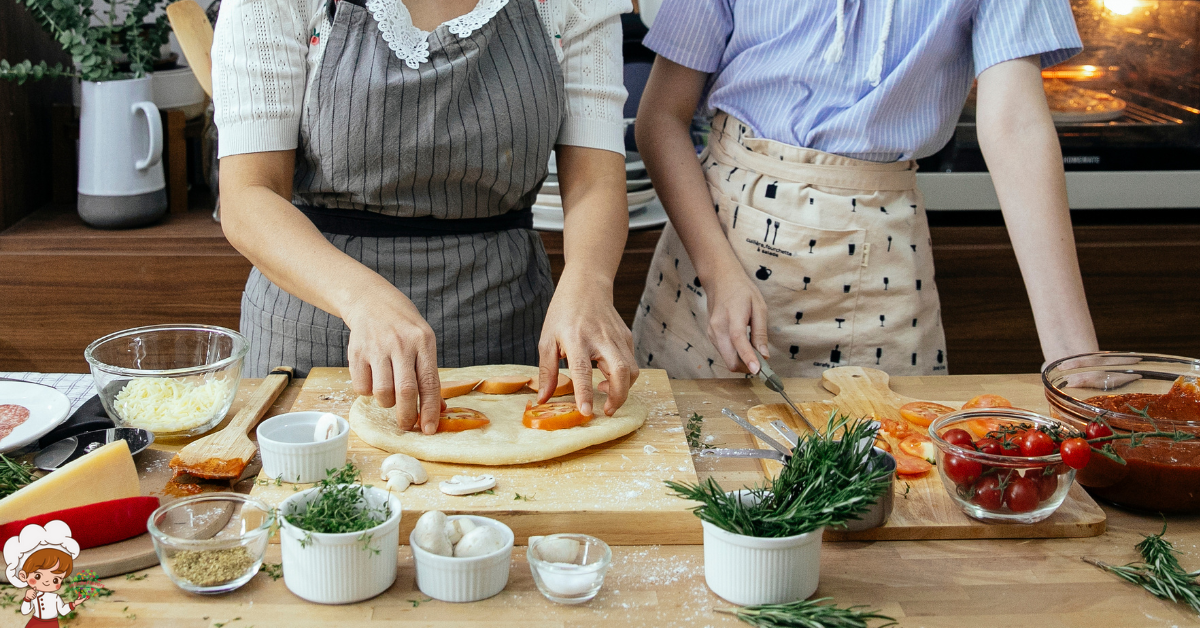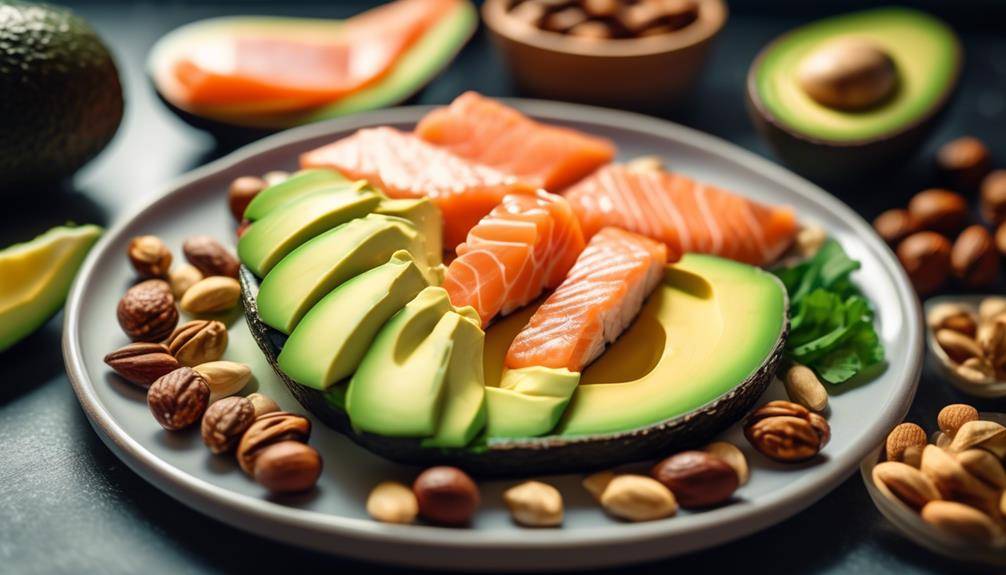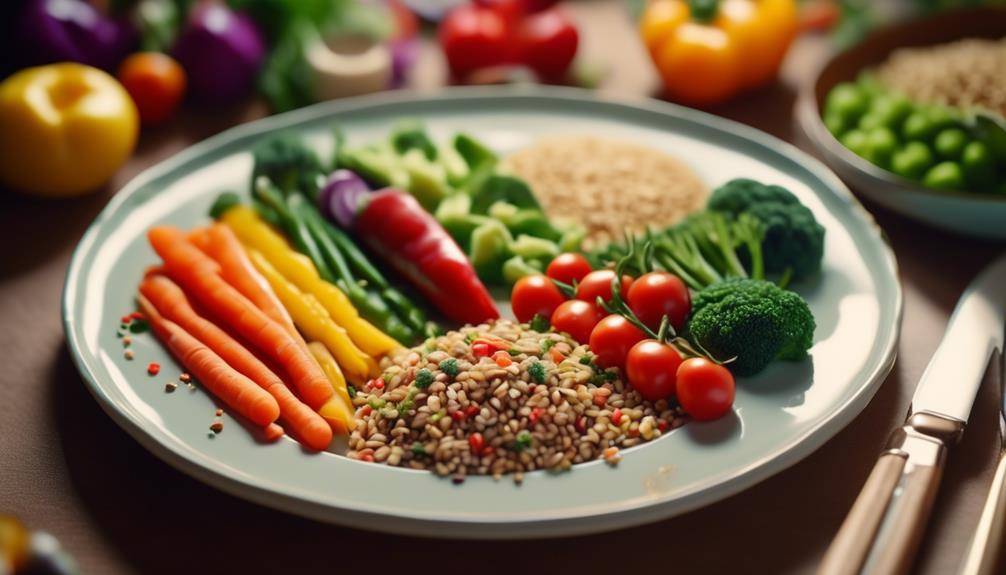How To Roast Turkey For Thanksgiving
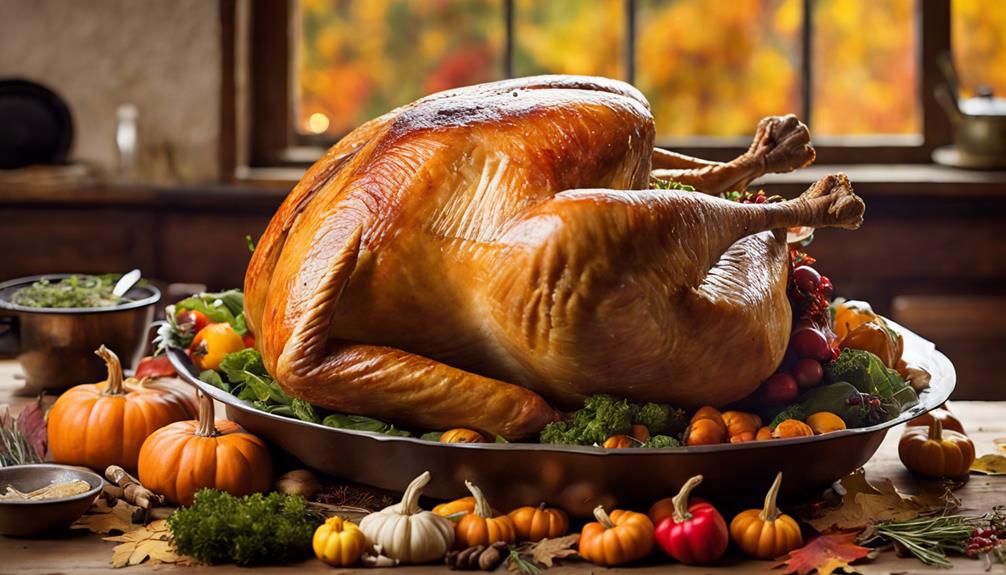
How To Roast Turkey For Thanksgiving, start by selecting a fresh or properly thawed turkey—one to 1.5 pounds per person is ideal. Rinse it, pat it dry, and let it sit at room temperature for about 30 minutes. Preheat your oven to 325°F. Season the turkey with your favorite herbs or a garlic butter rub for flavor. Cook it for approximately 13 minutes per pound, ensuring the internal temperature reaches 165°F. Allow it to rest for 20-30 minutes before carving to retain juices. Stick around for more tips to elevate your Thanksgiving feast!
Choosing the Right Turkey
When it comes to selecting the perfect turkey for your Thanksgiving feast, a little planning goes a long way. You’ll want to take into account various factors to guarantee that your centerpiece is both delicious and satisfying. One of the first things you should think about is the size of the turkey. Generally, you’ll want to allocate about one to one-and-a-half pounds per person. If you’re hosting a large gathering, opt for a bigger bird, but remember to check your oven’s capacity to verify it fits comfortably.
Next, you might want to explore heritage breeds. These turkeys are typically raised on smaller farms and are known for their rich flavor and better texture compared to conventional ones. Some popular heritage breeds include Bourbon Red, Narragansett, and Black Spanish. Each breed offers a unique taste, so picking one that intrigues you can elevate your Thanksgiving meal.
You’ll also need to decide whether you want a fresh or frozen turkey. Fresh turkeys can be harder to find but often provide superior flavor. On the other hand, frozen turkeys are widely available and can be more convenient if you plan ahead.
Ultimately, your choice of turkey size and breed can make a significant impact on your Thanksgiving feast. By taking the time to choose wisely, you’re setting the stage for a memorable holiday dinner that your friends and family will cherish.
Thawing the Turkey
Thawing your turkey safely is essential for a successful Thanksgiving feast. You’ll need to follow specific time guidelines and keep an eye on temperature to guarantee it’s ready for roasting. Let’s explore the best methods to get that turkey thawed and prepped just right.
Safe Thawing Methods
To guarantee a safe and delicious Thanksgiving turkey, it’s crucial to thaw it properly. You have a couple of reliable methods at your disposal: microwave thawing and cold water thawing.
Microwave thawing is the quickest option. Simply remove any packaging, place the turkey in a microwave-safe dish, and use the defrost setting based on its weight. Keep in mind that you’ll need to cook it immediately after thawing, as some areas may begin to cook during the process.
On the other hand, cold water thawing is a more gradual method, but it requires a bit more attention. To do this, submerge the turkey in its original packaging in a sink or cooler filled with cold water. Change the water every 30 minutes to keep it cold. This method is safe and can take a few hours, depending on the weight of the turkey.
Whichever method you choose, make sure to avoid thawing your turkey at room temperature, as it can lead to bacterial growth. Proper thawing not only keeps your turkey safe but also prepares it for a juicy and flavorful roast.
Thawing Time Guidelines
Understanding thawing time guidelines is essential for guaranteeing your turkey is ready for roasting. The general rule is to allow 24 hours of thawing time for every 4 to 5 pounds of turkey. If you’ve got a 12-pound turkey, for example, you’ll need about three days in the fridge. Keep in mind that while the refrigerator method is the safest, you can also use cold water for quicker results—just remember to change the water every 30 minutes.
To avoid common thawing mistakes, don’t leave your turkey out at room temperature, as this can promote bacterial growth. Also, never refreeze a thawed turkey unless it’s been cooked. If you’re pressed for time, consider smaller birds or turkey parts, which will thaw faster.
Remember these thawing tips to guarantee a safe and delicious Thanksgiving feast. If you plan ahead and follow these guidelines, you’ll set yourself up for success in the kitchen. A well-thawed turkey not only cooks more evenly but also makes for a juicier and more flavorful dish. Happy roasting!
Temperature Considerations
When it comes to thawing your turkey, temperature plays a critical role in guaranteeing both safety and flavor. You should always thaw your turkey in the refrigerator, where the temperature stays at or below 40°F. This slow thawing method not only maintains a safe internal temperature but also allows the meat to retain its moisture and flavor.
If you’re short on time, consider the cold water thawing method. Submerge your turkey in cold water, changing the water every 30 minutes to keep it below 40°F. This method can greatly speed up the process but requires more attention. Never thaw your turkey at room temperature, as this increases the risk of harmful bacteria growth.
Once your turkey is fully thawed, let it rest for at least 30 minutes before roasting. This resting time helps the meat relax, resulting in a juicier turkey. Additionally, always check the internal temperature of the turkey before cooking to guarantee it’s safe; it should reach 165°F in the thickest part. Proper thawing and temperature control are essential for a delicious Thanksgiving turkey.
Preparing the Turkey
Preparation is key to achieving a perfectly roasted turkey for Thanksgiving. First, focus on turkey selection—choose a fresh or fully thawed turkey to guarantee even cooking. If you’re going for a frozen turkey, remember to allow ample time for it to thaw in the refrigerator. A general rule is to allow 24 hours of thawing time for every four to five pounds of turkey.
Next, consider turkey storage. If you’ve got a fresh turkey, it should be stored in the fridge until you’re ready to prepare it. Keep it on the bottom shelf to avoid any juices dripping onto other foods. For frozen turkeys, check the packaging for specific storage instructions, but generally, they can stay in the freezer for up to a year. If you need to handle leftovers post-Thanksgiving, make sure you store them in airtight containers in the fridge for up to four days, or you can freeze them for up to four months.
Before cooking, rinse the turkey under cold water and pat it dry with paper towels. This helps guarantee a crispy skin. Don’t forget to check the cavity for any giblets or neck, which you can save for making gravy later. Finally, let the turkey sit at room temperature for about 30 minutes before roasting. This helps it cook more evenly. With the right preparation, you’re on your way to a delicious, perfectly roasted turkey that’ll impress your guests.
Seasoning Options
While there are countless ways to season your turkey, choosing the right combination can elevate your dish and create a mouthwatering centerpiece for your Thanksgiving feast. Start by considering herb blends; fresh rosemary, thyme, and sage can bring a classic flavor that’s hard to beat. If you’re in the mood for something bolder, spice rubs with paprika, cumin, and black pepper can add an exciting kick.
For a unique twist, think about a citrus infusion. Squeeze fresh lemons or oranges over your turkey, and place citrus slices inside the cavity to enhance the flavor. Another delicious option is garlic butter; mixing minced garlic with softened butter and rubbing it under the skin guarantees a rich, savory taste.
Savory marinades can also work wonders, soaking your turkey overnight in a mixture of soy sauce, olive oil, and herbs will help tenderize and flavor the meat. If you prefer a touch of sweetness, consider sweet glazes made from honey or maple syrup, brushed on during roasting for a beautiful caramelized exterior.
Don’t overlook aromatic oils infused with herbs or spices, which can be drizzled over the bird before cooking. Alternatively, you might opt for seasoning pastes that combine various elements into a thick mixture, making it easy to coat your turkey evenly. With these seasoning options, your turkey will not only taste incredible but also impress your guests!
Roasting Techniques
When it comes to roasting turkey, mastering the right techniques is essential for a delicious result. You’ll want to take into account brining your turkey to enhance its flavor and moisture, and knowing the ideal cooking temperatures will guarantee it cooks evenly. Let’s explore these key methods to elevate your Thanksgiving feast.
Brining for Flavor Enhancement
Brining enhances your turkey’s flavor and moisture, making it an essential step in the roasting process. When you soak your turkey in a brining solution, you’re allowing the flavors to penetrate deeply, resulting in a moist and flavorful bird. There are various brining solutions you can choose from, whether you opt for a simple saltwater mix or a more complex blend with herbs, spices, and even citrus.
Experimenting with different flavor profiles can elevate your turkey to new heights. For example, adding garlic, rosemary, or even apple cider to your brine can infuse unique tastes that complement the meat beautifully. You don’t need to brine for days; even a few hours can make a significant difference.
Make certain to refrigerate your turkey while it brines, keeping it safe from harmful bacteria. After brining, rinse your turkey under cold water to remove excess salt, then pat it dry to guarantee it roasts evenly. With these steps, your turkey will be bursting with flavor and juiciness, making it the star of your Thanksgiving feast. So, get ready to impress your guests with a perfectly brined turkey!
Ideal Cooking Temperatures
Getting the cooking temperature right is vital for achieving a perfectly roasted turkey. You’ll want to aim for an ideal temperature of 325°F (163°C) while roasting. This temperature allows the turkey to cook evenly, guaranteeing that the meat remains tender and juicy while the skin turns golden brown.
To promote cooking safety, it’s important to check the internal temperature of your turkey using a meat thermometer. The USDA recommends that you cook your turkey until it reaches an internal temperature of at least 165°F (74°C) in the thickest part of the breast and the innermost part of the thigh. If you’re stuffing your turkey, make sure the stuffing also reaches this temperature to prevent any foodborne illnesses.
Remember to let your turkey rest for at least 20-30 minutes after removing it from the oven. This resting period allows the juices to redistribute, making each slice flavorful and moist. By keeping an eye on the ideal temperature throughout the cooking process, you can promote a delicious and safe Thanksgiving feast for you and your loved ones. Happy roasting!
Cooking Time and Temperature
The cooking time and temperature are vital for achieving a perfectly roasted turkey. To guarantee your turkey is cooked to perfection, you’ll want to follow specific temperature ranges and cooking tips. Generally, you should roast your turkey at 325°F for even cooking.
For a turkey weighing 8 to 12 pounds, aim for about 2.75 to 3 hours of cooking time. If your turkey is larger, around 12 to 14 pounds, you’ll need to extend that time to approximately 3 to 3.75 hours. For even larger turkeys, 14 to 18 pounds, expect to cook for about 3.75 to 4.25 hours. If you’re roasting a turkey over 18 pounds, you’ll be looking at around 4.25 to 4.75 hours.
A vital cooking tip is to keep an eye on the temperature throughout the roasting process. While the overall cooking time is important, the internal temperature of the turkey is what really matters. Your turkey should reach an internal temperature of 165°F in the thickest part of the breast and innermost part of the thigh.
Using a meat thermometer will help you avoid undercooking or overcooking. Remember, it’s better to check a bit earlier than to risk a dry turkey. With these temperature ranges and cooking tips in mind, you’re well on your way to serving a moist, flavorful turkey that’ll impress your guests.
Checking for Doneness
After ensuring your turkey has been cooked for the appropriate time and reached the recommended temperature, it’s time to check for doneness. The most reliable method to determine if your turkey is fully cooked is by using a meat thermometer. Insert the thermometer into the thickest part of the thigh, avoiding the bone. You want to aim for an internal temperature of 165°F (74°C). If the thermometer reads this temperature, your turkey is safe to eat.
While the temperature is vital, it’s also important to check other areas. The thickest part of the breast should also reach 165°F. If you find that the temperature is lower than this, return the turkey to the oven and check again after a few minutes. Remember that carryover cooking will raise the temperature slightly while the turkey rests.
Speaking of resting, once your turkey reaches the desired internal temperature, let it rest for at least 20 to 30 minutes before carving. This resting period allows the juices to redistribute throughout the meat, making it juicy and flavorful. During this time, the internal temperature may rise slightly, ensuring your turkey’s doneness is perfect.
Carving and Serving Tips
Once your turkey has rested and is ready to carve, it’s time to dig in and serve up a beautiful meal. Start by placing the turkey on a sturdy cutting board, breast side up. Use a sharp carving knife and a fork or carving set to help you navigate the bird. Slice along the breastbone, pulling away the meat in even portions. Carve each breast section into thick slices for a hearty serving.
Next, move on to the legs and thighs. Grab the drumstick and twist it gently to separate it from the body. Cut through the joint to remove it entirely. Follow the same process for the thigh, slicing it into smaller pieces if you prefer.
For presentation ideas, arrange the carved meat on a large platter, alternating slices of white and dark meat for a colorful display. You can also garnish with fresh herbs, like rosemary or thyme, for an extra touch. Consider serving the turkey alongside a variety of sides in beautiful serving dishes to create an inviting table setup.
As for serving suggestions, offer a selection of sauces, like cranberry sauce or gravy, on the side to enhance the flavors. Don’t forget to provide guests with utensils and napkins for easy serving. With these carving and serving tips, you’ll not only impress your guests but also create a warm and festive atmosphere for your Thanksgiving feast.
Frequently Asked Questions
Can I Roast a Turkey the Day Before Thanksgiving?
Yes, you can roast a turkey the day before Thanksgiving. Just remember turkey preparation tips like proper cooling and storage, and use effective roasting techniques to guarantee it stays juicy and flavorful for your feast.
How Do I Store Leftover Turkey Safely?
To store leftover turkey safely, place it in airtight containers within two hours of cooking. Refrigerate and use it within three to four days. You can create delicious leftover recipes like turkey sandwiches or casseroles!
What Side Dishes Pair Well With Roasted Turkey?
When considering side dishes, you’ll want festive pairings that enhance Thanksgiving flavors. Think creamy mashed potatoes, savory stuffing, green bean casserole, or cranberry sauce. Each complements roasted turkey beautifully, creating a memorable holiday feast.
Can I Use a Frozen Turkey for Roasting?
Yes, you can use a frozen turkey for roasting. Just remember to use proper thawing methods, like the refrigerator or cold water. Adjust cooking times accordingly, as frozen turkeys require longer to cook through.
How Do I Create a Turkey Gravy From Drippings?
To create turkey gravy from drippings, start by whisking flour into the fat for desired gravy consistency. Gradually add broth, stirring constantly. Don’t forget seasoning tips—salt and pepper enhance flavor, so taste as you go!
Conclusion
Roasting a turkey for Thanksgiving doesn’t have to be intimidating. By choosing the right bird, properly thawing and preparing it, and experimenting with delicious seasonings, you’ll create a centerpiece that everyone will love. Remember to monitor the cooking time and check for doneness to guarantee it’s juicy and flavorful. Once it’s carved, serve it up with pride. Enjoy the process and the time spent with loved ones; it’s all part of the holiday magic!



